#mens hanfu
Explore tagged Tumblr posts
Text



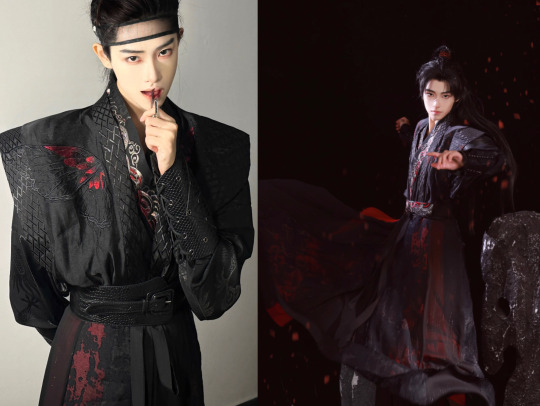




chinese hanfu by 羽月司衣局
2K notes
·
View notes
Note
Thank you so much for gathering this information, you are providing a valuable resource for hanfu enthusiasts! I love the sumptuous cuts and fabrics, but as someone often involved in physical labor, it isn't realistic for me. Are there any examples of clothing that might be worn by country folk who have to work in the fields and tend animals?
Hi! Thanks for the question, and sorry for taking ages to reply! (image via)
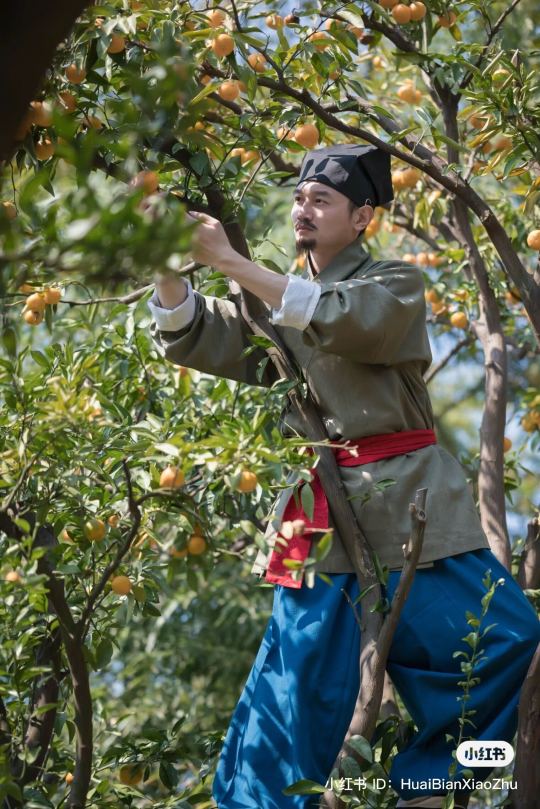
Yes, there is hanfu suitable for country folk who have to work in the fields and tend animals. Historically, such people would have worn a type of unisex hanfu called 裋褐/shuhe. Shuhe goes by a few other names, including 短打/duanda, 短褐/duanhe, and 竖褐/shuhe. They all refer to a two-piece set of attire composed of a cross-collar top that extends to the knees, coupled with tied trousers. Both pieces were typically made out of coarse cloth. It is the basis of almost all underclothing, usually the clothing worn under armor, and the casual outfit of commoners and laborers (x). This outfit was generally worn by people doing manual labor, such as farm work, and by martial artists (x).
I wrote about shuhe in my post on casual/adventurer-type hanfu here. For more information on shuhe, I recommend checking out the following links:
Wikipedia article on 衫��/shanku
Patterns for shuhe-making
Shuhe-making tutorial
A few images of shuhe in historical art & modern day (1, 2, 3, 4):
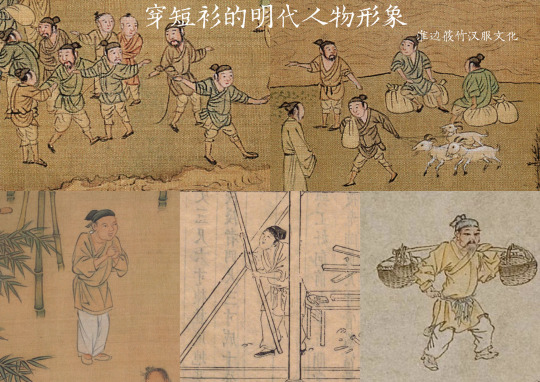
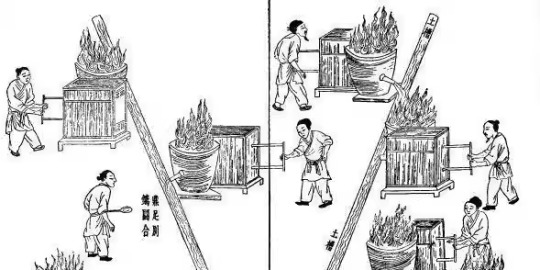
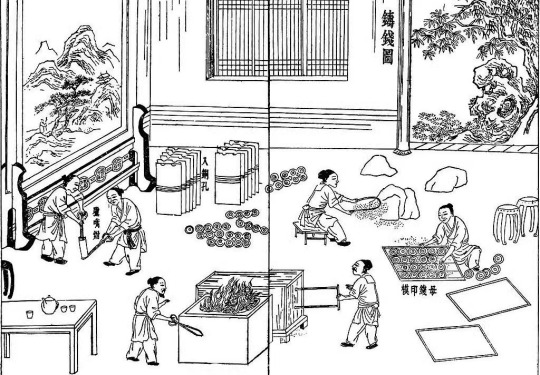

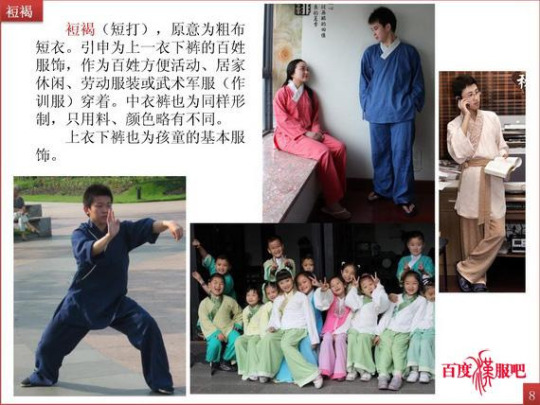
Shuhe understandably isn't as popular as other "fancier" hanfu styles, but there are still some available on Taobao, including the following:
Farmer-style shuhe for spring & autumn from 華夏节奏 (x):

2. Ming-style ramie shuhe from 淮边筱竹 (x):
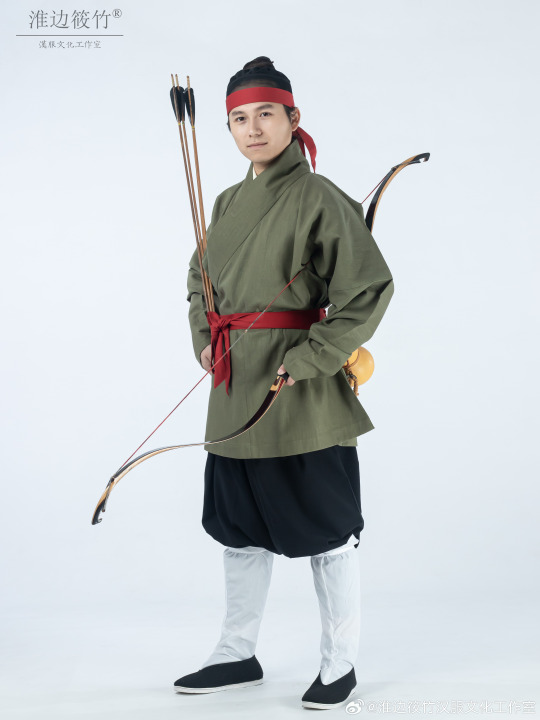
3. Tailor-made Ming-style shuhe from 淮边筱竹 (x):
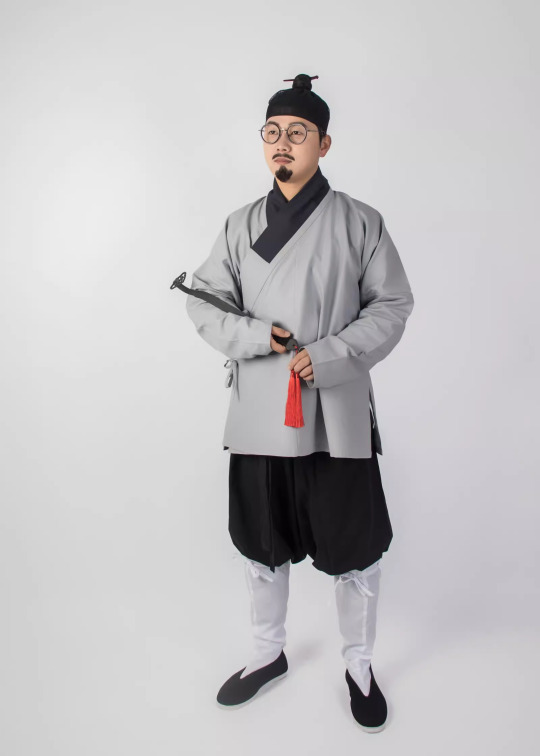
4. Ming-style quilted cotton winter shuhe from 淮边筱竹 (x):

For more references, please see my shuhe and commoners hanfu tags.
If anyone has more info/recs, please share! ^^
Hope this helps!
#hanfu#shuhe#duanda#mens hanfu#commoners hanfu#hanfu recommendations#history#reference#ask#reply#lookadreygon#chinese fashion#chinese clothing#chinese culture#china
455 notes
·
View notes
Text








Liu Yu
#liu yu#刘宇#hanfu#men's hanfu#mens hanfu#i need you guys to see him i havent had enough time to properly lose my mind over this look yet but. god
95 notes
·
View notes
Text
[Hanfu · 漢服]Chinese Song Dynasty(960–1279AD)Emperor Traditional Official Hanfu











The official uniform of the Chinese Song Dynasty emperor in "Serenade of Peaceful Joy"




【Historical Reference Artifacts】:
Portrait of Emperor Taizu (21 March 927 – 14 November 976)of Song Dynasty, kept in the National Palace Museum

Portrait of Emperor Yingzong (16 February 1032 – 25 January 1067) of Song Dynasty, kept in the National Palace Museum

Many people may curious about why the emperors of the Song Dynasty did not wear the classic yellow, but instead wore white or red round-necked robes.
During the Han and Tang dynasties, yellow was exclusively associated with imperial authority. According to the theory of "the Wuxing (Chinese philosophy)"which is Fire, Water, Wood, Metal, and Earth, yellow represented the center and symbolized the legitimacy of imperial power. However, during the Song Dynasty, due to political changes, Emperor Taizong decided to shift this tradition and adopt red as the new symbolic color for the dynasty. The court officials supported this change and provided various justifications, such as the theory of fire's virtue and the idea of red being a color of celebration, among others.
During the Han and Tang dynasties, yellow was exclusively associated with imperial authority. According to the theory of "the Wuxing (Chinese philosophy)"which is Fire, Water, Wood, Metal, and Earth, yellow represented the center and symbolized the legitimacy of imperial power. However, during the Song Dynasty, due to political changes, Emperor Taizong decided to shift this tradition and adopt red as the new symbolic color for the dynasty. The court officials supported this change and provided various justifications, such as the theory of fire's virtue and the idea of red being a color of celebration, among others.
【Emperor Taizu of Song Dynasty<Zhao Kuangyin/赵匡胤>】
Emperor Taizu of Song (21 March 927 – 14 November 976), personal name Zhao Kuangyin, courtesy name Yuanlang, was the founding emperor of the Song dynasty of China. He reigned from 960 until his death in 976. Formerly a distinguished military general of the Later Zhou dynasty, Emperor Taizu came to power after staging a coup d'état and forcing Emperor Gong, the last Later Zhou ruler, to abdicate the throne in his favor.
During his reign, Emperor Taizu conquered the states of Southern Tang, Later Shu, Southern Han, and Jingnan, thus reunifying most of China proper. To strengthen his control, he lessened the power of military generals and relied on civilian officials in administration. He was succeeded by his younger brother, Zhao Kuangyi (Emperor Taizong).
Early life
Born in Luoyang to military commander Zhao Hongyin, Zhao Kuangyin grew up excelling in mounted archery. Once, riding an untamed horse without a bridle, he knocked his forehead on the wall above the city gate and fell off, but got right back up and chased the horse, eventually subduing it while going unharmed. In the mid-940s, he married Lady He on his father's arrangement. After wandering around for a few years, in 949 he joined the army of Guo Wei, a jiedushi (military governor) of the Later Han dynasty, and helped Guo quell Li Shouzhen's rebellion.
Career under Later Zhou(后周)
In 951, Guo Wei rebelled and created the Later Zhou dynasty. Because of his brilliant combat skills, Zhao Kuangyin was promoted to a palace guard commander. Chai Rong (Emperor Shizong of Later Zhou) frequently met Guo Wei and noticed Zhao Kuangyin's potential. Under his command, Zhao Kuangyin was made into a commander of the cavalry units. Under Chai Rong, Zhao Kuangyin's rise to power had begun.
Zhao Kuangyin's career started at the Battle of Gaoping, against the alliance of the Northern Han and Liao dynasties.
This rivalry started when Chai Rong ascended the throne and Liu Chong decided to work with the Liao dynasty. In the initial confrontation, the army's right flank, led by Fan Aineng (樊愛能) and He Hui (何徽), was defeated. Looking at the situation, Zhao Kuangyin and Zhang Yongde (張永德) led 4000 elite Palace troops to counter the Liao army. Zhao Kuangyin's exhortation for the loyalty to the emperor quickly strengthened morale. The small force held off the larger Liao army until reinforcements arrived. In the end, the successful counter repelled the Northern Han back to Taiyuan.
The victory raised Zhao Kuangyin up to the post of the grand commander of the palace guards, as well as reorganising and training them. More importantly, he developed the relations with other generals and officials related to the Chief of Palace, including Shi Shouxin, Wang Shenqi (王審琦), Yang Guangyi (楊光義), Wang Zhengzhong (王政忠), Liu Qingyi (劉慶義), Liu Shouzhong (劉守忠), Liu Yanrang (劉延讓), Mi Xin (米信), Tian Chongjin (田重進), Pan Mei, his brother Zhao Kuangyi, Shen Yilun (沈義倫), Lu Xuqing, Zhao Pu (趙普), Chu Zhaofu (楚昭輔). Within a few years, Zhao Kuangyin completely controlled the palace guards and even developed a set of officials under him with the people mentioned above.
Soon, he was promoted to a jiedushi (military governor), controlling most of the military power under Chai Rong. Nevertheless, he still had two rivals – Zhang Yongde (Guo Wei's son-in-law) and Li Chongjin (Guo Wei's nephew). In 959, after a trap[clarification needed] set by Zhao Kuangyin, Zhang Yongde was demoted. After the death of Chai Rong, the Later Zhou throne was left to his seven-year-old son Guo Zongxun, and the second rival, Li Chongjin, soon found himself lacking the political backing. As a result, Zhao Kuangyin was able to use his influence to transfer Li Chongjin to Yang Prefecture as a jiedushi.
Chenqiao Mutiny/陈桥兵变
Main article: Chenqiao Mutiny20th-century illustration of Zhao Kuangyin being proclaimed emperor by the army of the Later Zhou dynasty.
In 960, word reached the chancellor Fan Zhi that Northern Han and Liao dynasties were once again allied to invade them again. Without verifying the reliability of the hearsay, Fan Zhi sent Zhao Kuangyin to combat the alliance. After traveling 40 li, there was a clamour that a "prophet" saw two suns fighting, and that this meant the transfer of the Mandate of Heaven to Zhao Kuangyin. The story effectively spread around the army: there came discontent of the "command" of the young emperor and a shift of loyalty to Zhao Kuangyin. A few days later, when Zhao Kuangyin was drunk in his tent, all the troops had not slept the whole night; they got their weapons and started yelling. Zhao Pu and Zhang Kuangyi, who were guarding the tent, saw the situation and went into the tent to wake up Zhao Kuangyin. When Zhao Kuangyin came out, all the troops yelled, "The army is without a master, we are willing to make the general the new emperor." Allegedly, Zhao Kuangyin took the power reluctantly, only under the urging of his soldiers. The midnight mutiny of officers forcibly urged Zhao Kuangyin to the throne; but, when the officers presented him to the troops as their new commander-in-chief he refused the imperial nomination until they swore unconditional obedience to him as leader.[6] News of the rebellion soon reached the court and chaos erupted. The only person who thought about a resistance was Han Tong, but he was killed by one of Zhao Kuangyin's generals when he reached home.
Upon entering the capital to take his seat on the throne, Zhao Kuangyin made an executive order prohibiting the troops from looting the city or otherwise violating the rights of the population.
This coup would allow Zhao Kuangyin to become emperor in 960.With the gates opened for him, he became emperor with no resistance. Before the chancellor Fan Zhi could say anything, one of Zhao Kuangyin's generals pointed a sword at him and said, "We are without masters. Today, we must have an emperor." After the officials looked at each other and knew it was hopeless to resist; they all bowed down. With the court under control, Zhao Kuangyin was officially proclaimed emperor. The new dynasty's name, Song, was inspired by the army Zhao Kuangyin commanded in Song Prefecture.
After the declaration, Zhao Kuangyin sent the dethroned young emperor Guo Zongxun with his mother to the Western Capital (西京). He personally ordered the Zhao family to receive the Chai family into their family's care for generations.
As emperor
Emperor Taizu playing cuju with Zhao Pu, by the Yuan dynasty painter Qian Xuan (1235–1305)
In 960, Zhao Kuangyin helped reunite most of China proper after the fragmentation and rebellion between the fall of the Tang dynasty in 907 and the establishment of the Song dynasty. The plan set during Chai Rong's reign was to first conquer the north, then the south. During Emperor Taizu's reign, there was a change in strategy. He would conquer all the smaller states such as Later Shu, Southern Han and Southern Tang. The exception was the strong Northern Han in the north at Taiyuan supported by the Khitans of the Liao dynasty. Emperor Taizu's strategy was to win over the independent southern states[8] as the south was weaker than the north as the Liao dynasty supported Northern Han.
In 968, Emperor Taizu personally led the army against the Northern Han. At first, his forces tore through the defences and placed Taiyuan under siege, but was ultimately forced to retreat after he struck against the defences of the Northern Han with the Liao cavalry coming in to support.Portrait of Emperor Taizu, who founded the Song dynasty
Emperor Taizu established the core Song Ancestor Rules and Policy for the later Song emperors. He was remembered for his expansion of the imperial examination system such that most of the civil service were recruited through the exams (in contrast to the Tang where less than 10% of the civil servants came through exams). He also created academies that allowed a great deal of freedom of discussion and thought, which facilitated the growth of scientific advance, economic reforms as well as achievements in arts and literature.
Emperor Taizu is well known for bringing the power of the military under control, ending the era of the warlords, centralizing the state over regional commanders and so preventing anyone else rising to power as he did.[8] Upon becoming emperor, he invited the general officers to a lavish banquet, where he convinced them all to retire as military leaders or accept minor posts, in favour of enjoying extensive estates and generous retirement funds and benefits which he then offered them.At a certain point during the feast, the new emperor made a speech to the military officers assembled there, which he began by expressing his deep gratitude to each and all of them for placing him on the throne, and that now that he had the power to do so, he wished to reward them to the utmost of his ability; then he went on to say that he thought the present company would all understand that he could not feel at ease on his new throne, with them continuing in command of their various armies of troops: and, he said, that if they duly considered the ramifications of the matter, neither would they. He then sincerely promised that they and their families would live in happiness and harmony, if they accepted his offer to retire with the stated benefits: eventually, none of the generals refused his terms, and thus began a period of relative internal peace within the realm for the duration of the Song dynasty which he thus founded, also better securing the military forces for involvement with the rival surrounding empires.
Many Song and later sources record the story of the "Taizu's Oath", which forbade his successors from killing scholar-officials. However, this story might be a later construct.
Death and succession dispute
Tomb of Emperor Taizu in the Yongchang Mausoleum, Gongyi, Zhengzhou
Emperor Taizu reigned for seventeen years and died in 976 at the age of 49. Curiously, he was succeeded by his younger brother, Zhao Kuangyi (Emperor Taizong), even though he had two grown sons – Zhao Dezhao, the Prince of Yan (951–979), and Zhao Defang, the Prince of Qin (959–981). The traditional historical accounts place emphasis on the role Zhao Kuangyin's mother played in the decision which was made shortly after the Song dynasty was proclaimed (around 961). So for nearly his entire reign, it was known and accepted that Zhao Kuangyi would succeed him.
In folklore, the story known as "shadows by the candle and sounds from an axe" is very popular and suggests that Emperor Taizu was murdered by his brother, who was after the throne.After his death, Taizu was interred at the Yongchang Mausoleum, near Gongyi.
After Emperor Taizong, the line of succession passed on to his son and descendants rather than those of Emperor Taizu. However, when Emperor Gaozong (1127–1161) failed to produce an heir, he selected a descendant of Emperor Taizu to be his adopted heir to succeed him in 1161. After 1161, all the subsequent Song emperors were descended from Emperor Taizu through his two sons, Zhao Dezhao and Zhao Defang.
—————————–
📸Photo::©胶宗模玩jiaotoys(Chinese manufacturing historical figure model merchant)
🔗Xiaohongshu App:https://www.xiaohongshu.com/user/profile/5659f093589de33cb53e0083
—————————–
#chinese hanfu#Song Dynasty(960–1279AD)#Emperor Taizu of Song Dynasty#hanfu#hanfu accessories#hanfu_challenge#chinese traditional clothing#china#chinese#yuanlingpao#mens hanfu#mens headwear#胶宗模玩jiaotoys#漢服#汉服#中華風#Serenade of Peaceful Joy
116 notes
·
View notes
Text



Martial arts styling - Men's Hanfu
From Hanfu Model-Li Zong Hao
84 notes
·
View notes
Text
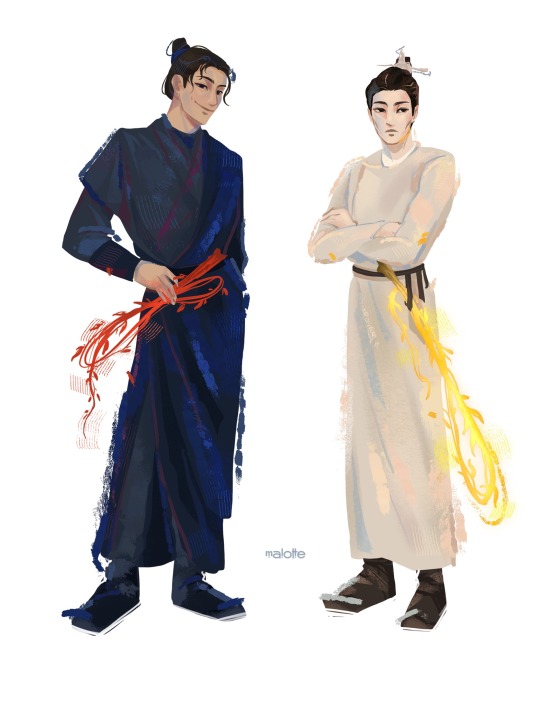
#2ha#2ha novel#2ha fanart#erha#erha fanart#erha he ta de bai mao shizun#the husky and his white cat shizun#mo ran 2.0#mo ran#mo ran x chu wanning#chu wanning#ranwan#mo weiyu#danmei#dumb husky and his white cat shizun#hanfu#chinese hanfu#hanfu art#hanfudress#mens hanfu#art#illustration#procreate#artists on tumblr#digital art#commission open#character art
153 notes
·
View notes
Text
I’m really hoping tumblr does it’s magic I’m helping a friend look for characters design inspo they really like tech ware and street ware that involve things like kimono’s and hanfu’s and things of the like but they wanna avoid cultural appropriation we wanted to find something similar but have had no luck (images are examples of what they liked)

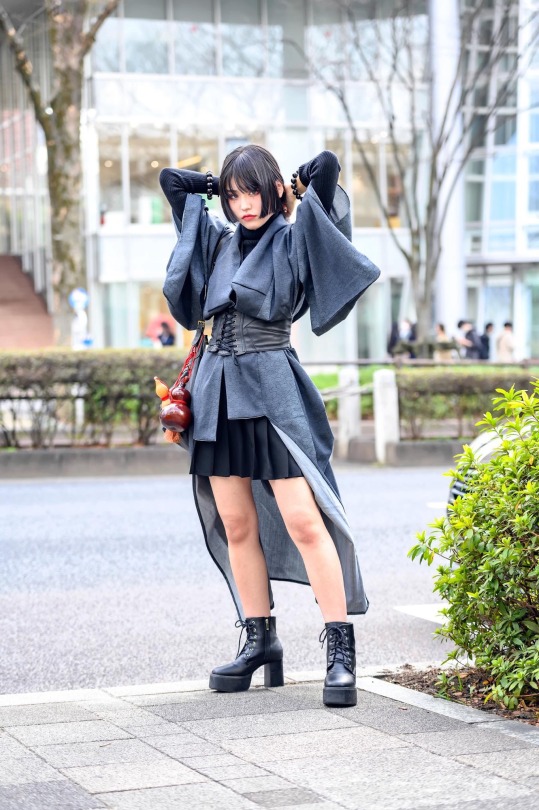

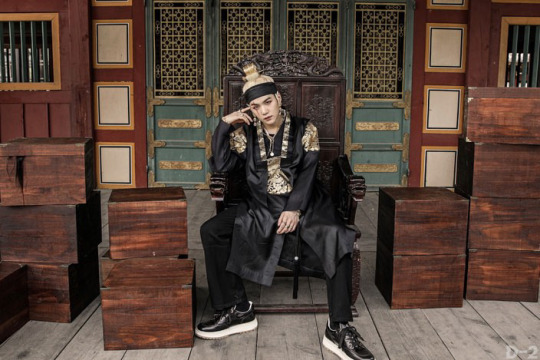



#techwave#street style#street fashion#tech ware#chinese hanfu#mens hanfu#kimono#aestethic#help me find aesthetics#want to avoid cultural appropriation#techware
27 notes
·
View notes
Text








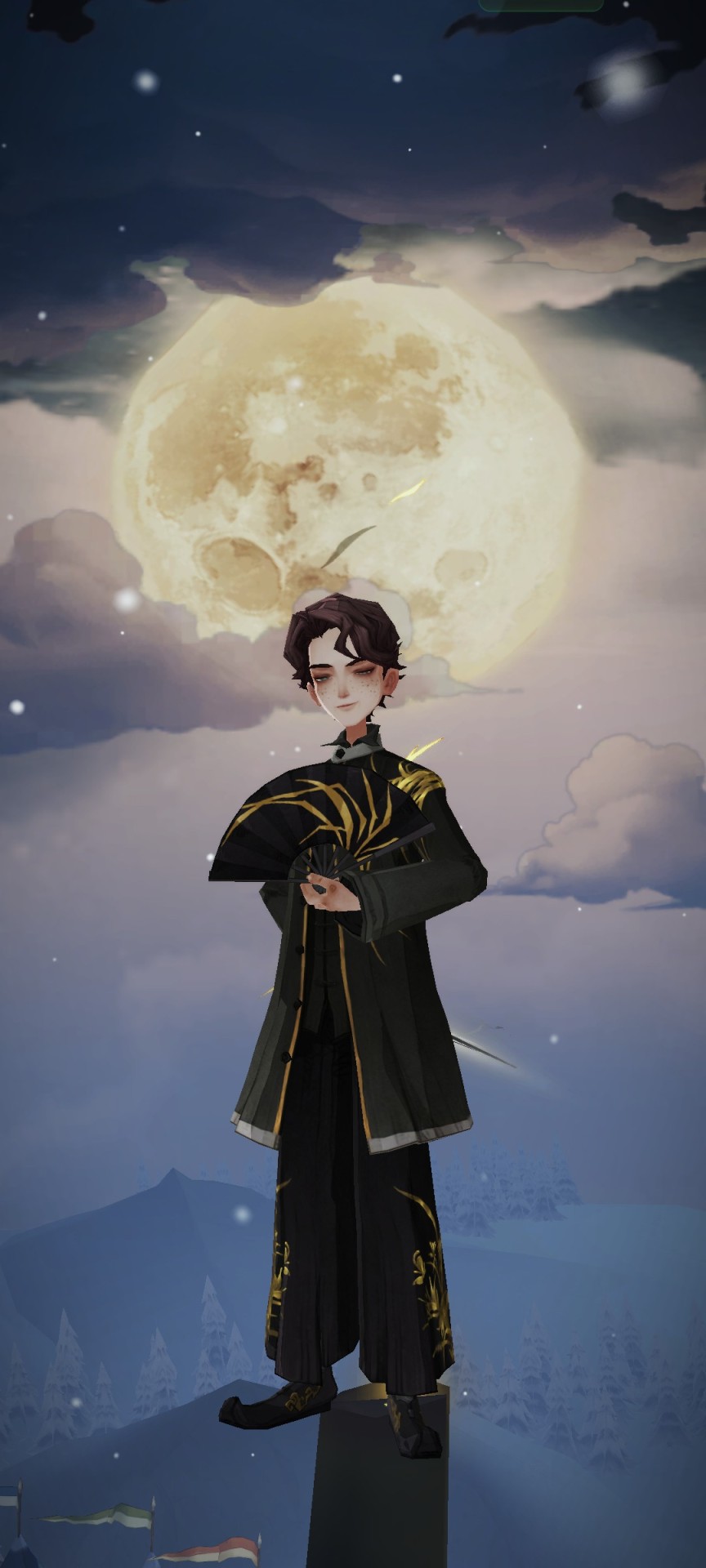

#harry potter#harry potter magic awakened#hpma#magic awakened#hp magic awakened#hogwarts#harry potter hogwarts#hogwarts school of witchcraft and wizardry#hufflepuff#slytherin#Xia#Andrew#Hanfu#qipao#mens hanfu#harrypottermagicawakened#harry potter mc
3 notes
·
View notes
Text
辉光哥生日快乐!
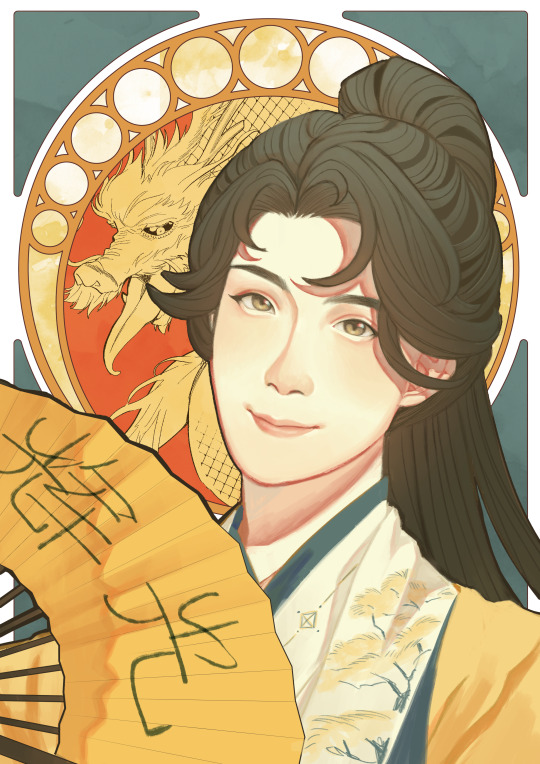
something i did for my favorite model, 辉光不是灰光 birthday <3 its actually on 26/7 but i was pretty late by 3 days hdbsjhdTT 下次一定不要迟到!also i think did pretty good job corporating the art nouveau style and chinese traditional elements, i was looking through which color that is considered luck for him(he is metal dragon) and so yellow/green it is xD but somehow bit of red because its birthday art
#hanfu fashion#mens hanfu#chinese hanfu#hanfu#art nouveau#辉光不是灰光#digital drawing#digital art#thank u for being the sole reason why i wanted to study in hangzhou//hj#but fr#you helped me to stand on my feet during my darkest time#wishing u the best 光光#also i didnt get the scholarship lmao but thats okay
25 notes
·
View notes
Text
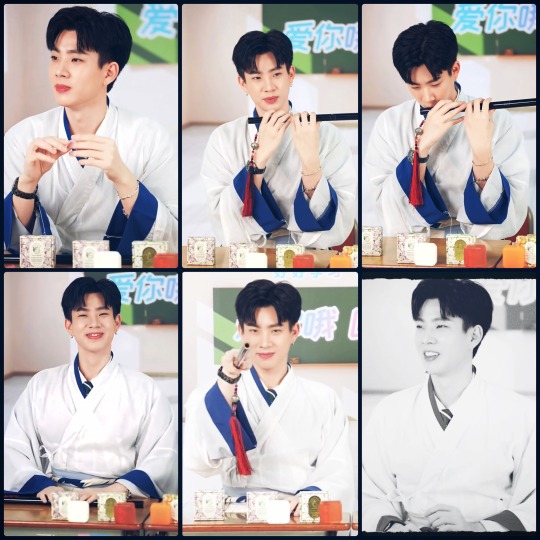

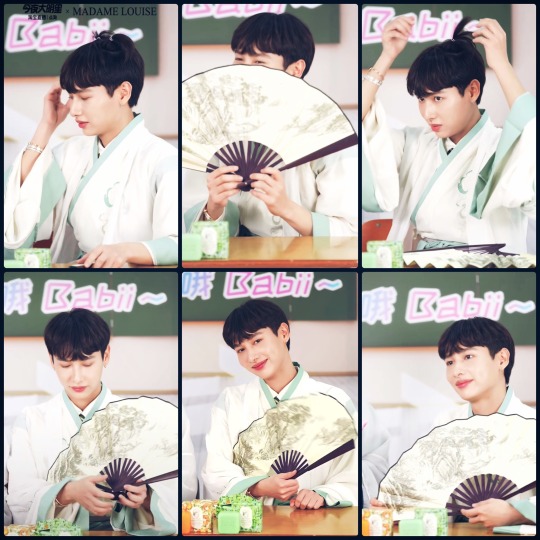
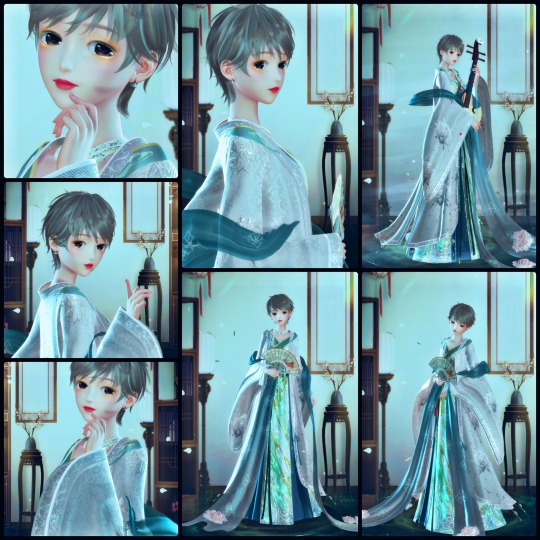
#thai bl#thai series#youtube#thai drama#boys love#gmmtv#offgun#not me#not me the series#gun atthaphan#not me series#off jumpol#madame Louise February 2023 offgun live#漢服#mens hanfu#shining nikki#shining nikki tw
3 notes
·
View notes
Photo
Very pretty but as someone below here say
@onaishi THIS IS AI JUST A HEADS UP

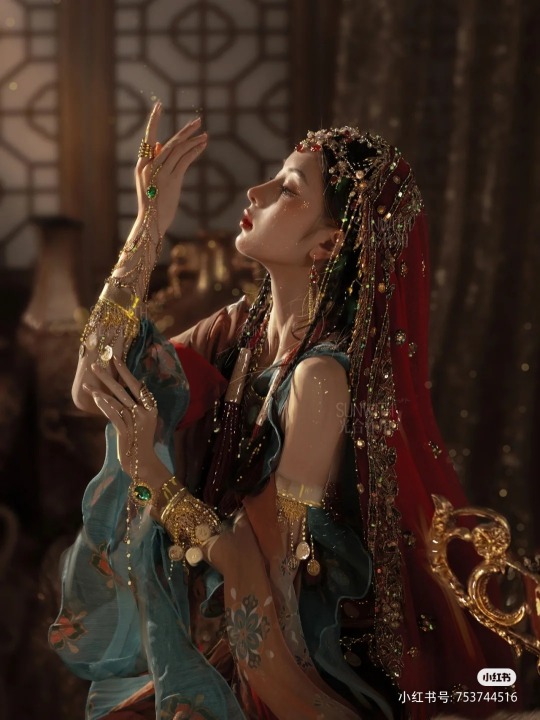



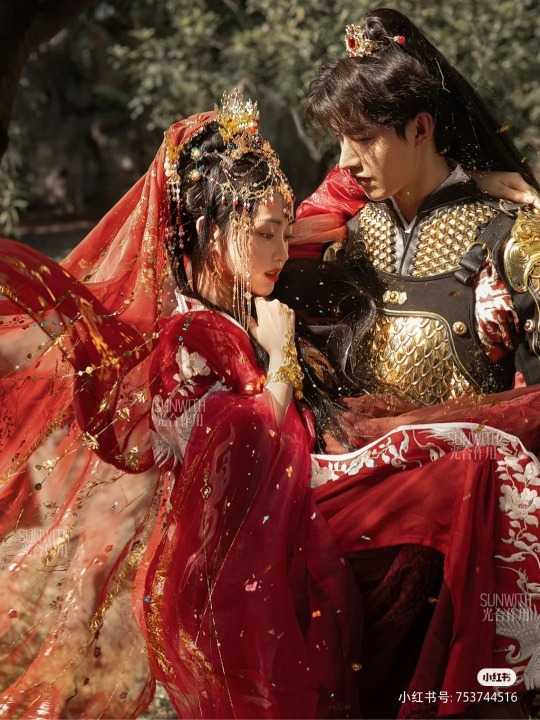


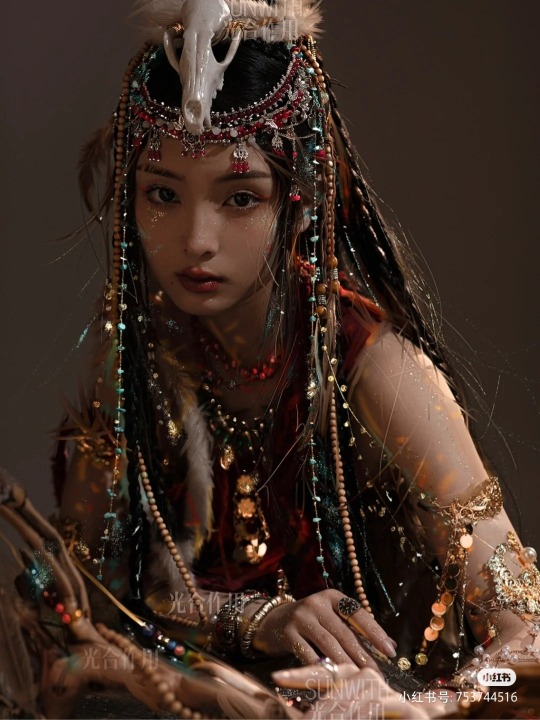

fantasy fashion inspired by various historical fashion in tang dyansty (arabian, central asia, hanfu, xiyu) by 海邪邪
1K notes
·
View notes
Text


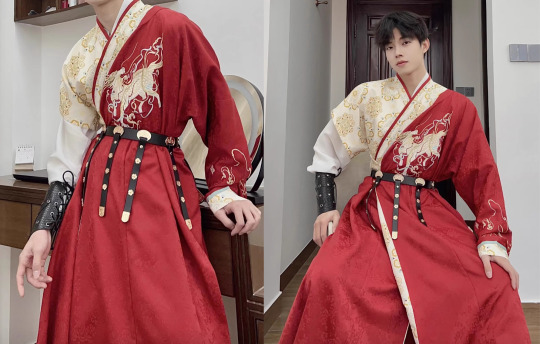
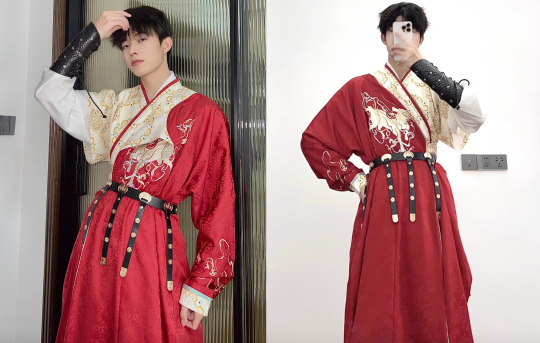

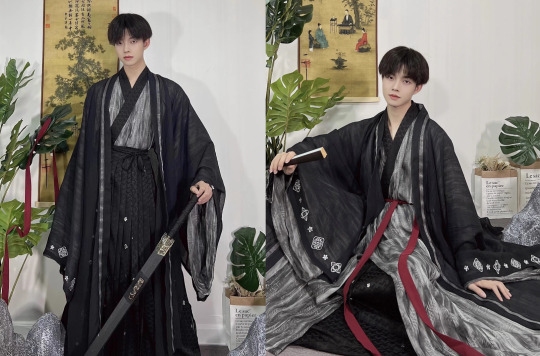

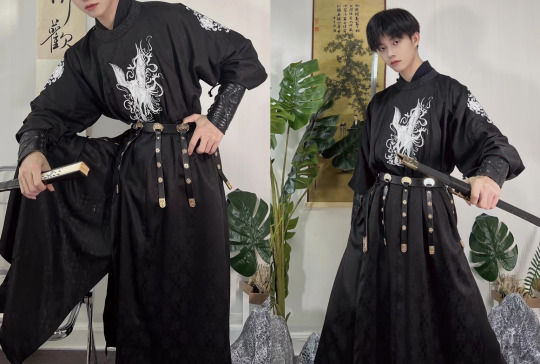
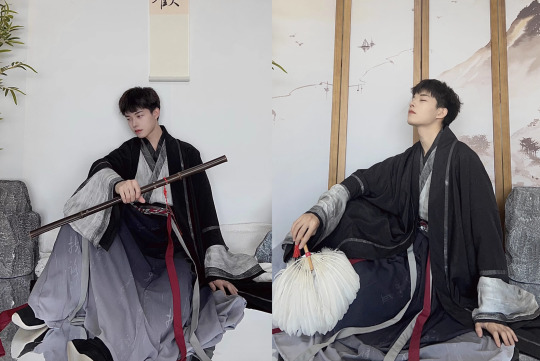
chinese hanfu by 羽月司衣局
2K notes
·
View notes
Photo
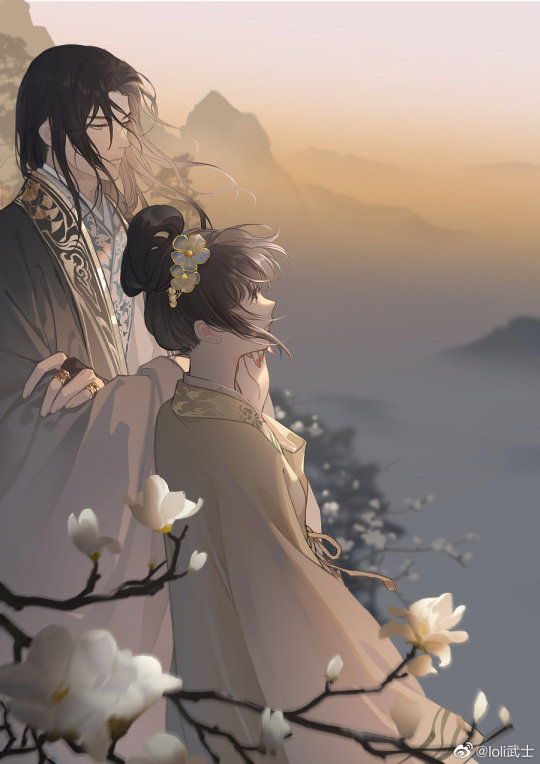
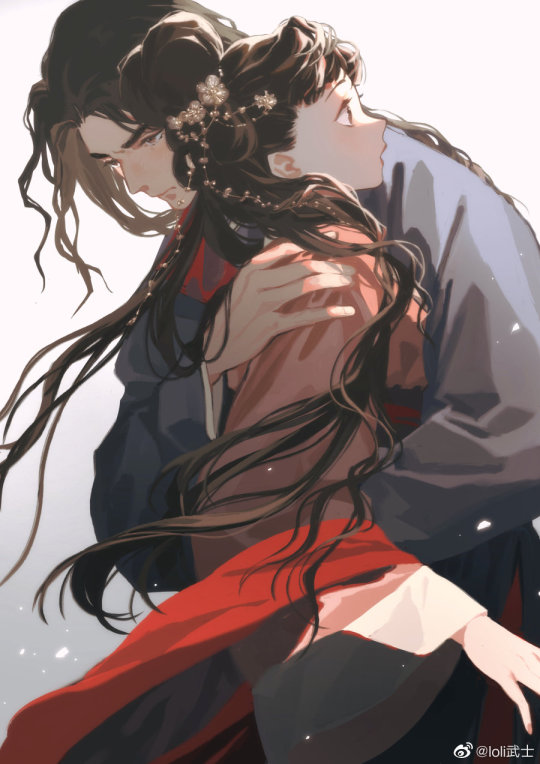
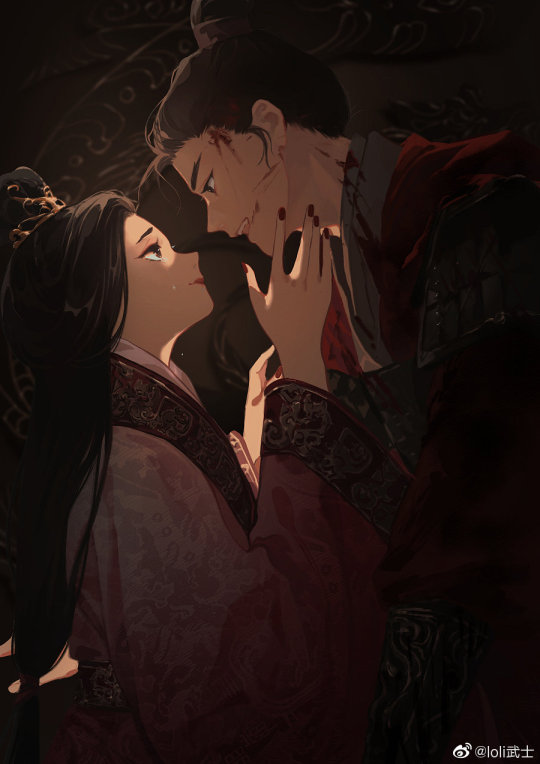
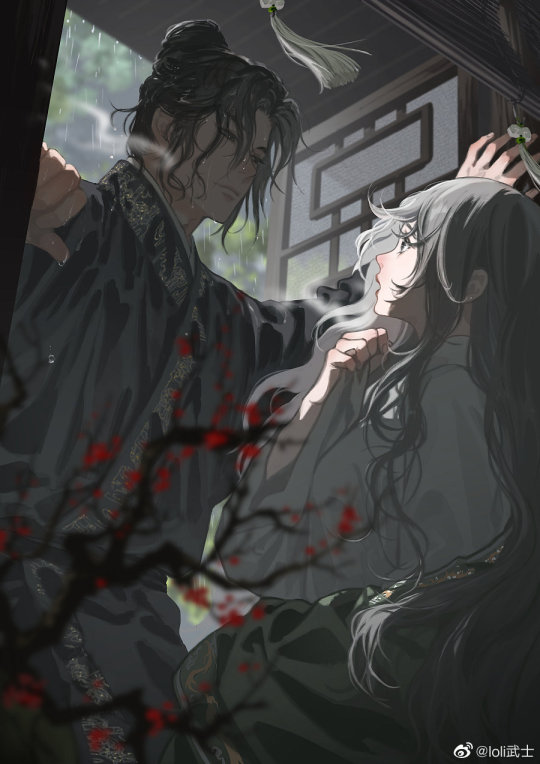
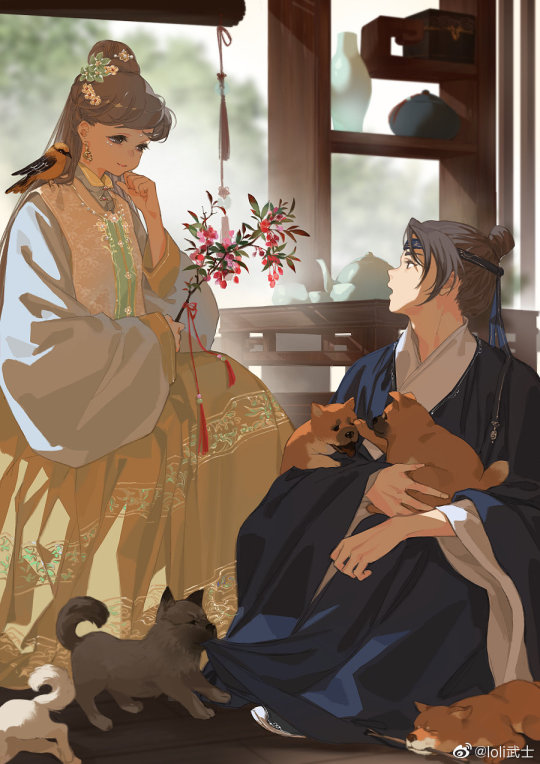

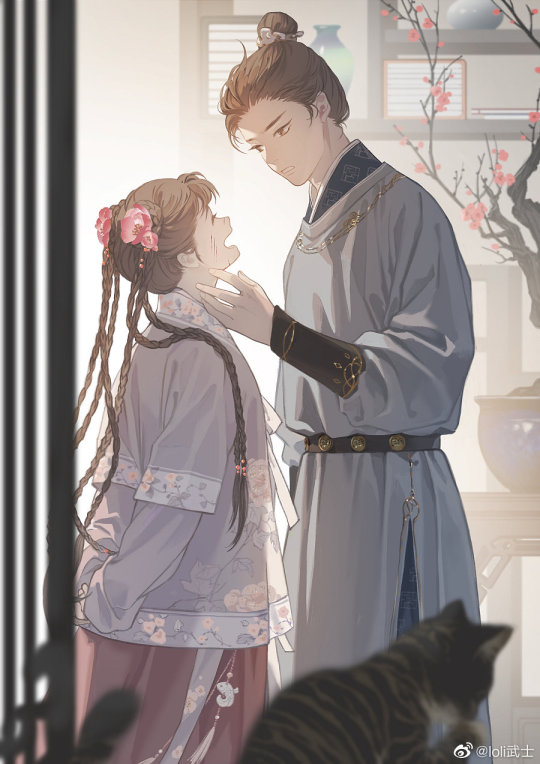
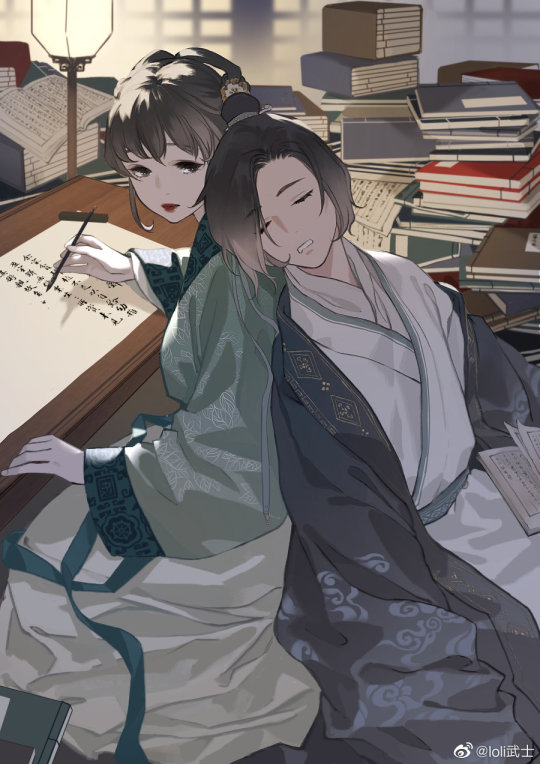


Paintings of couples in traditional Chinese hanfu, Pt 6 (Pt 1/2/3/4/5) by Chinese artist loli武士. Link to artist’s weibo here.
#happy valentine's day!#art#hanfu#mens hanfu#couples hanfu#gufeng#loli武士#>100#chinese fashion#chinese clothing#china
310 notes
·
View notes
Text





mens chinese hanfu
385 notes
·
View notes
Text
OP's tags: #damn they brought the whole court....
FASCINATING, NEAT

2K notes
·
View notes
Note
Traditional hair ornaments for men?
Hi! Thanks for the question, and sorry for taking ages to reply!
For posts showcasing traditional hair ornaments for men, please check out my mens headwear tag. I also have a "men's headwear/hairstyles" section in my Q&A Masterpost - so please check that out as well.
Hope this helps!
#mens headwear#hair ornaments#hanfu accessories#hanfu#mens hanfu#tik-a#ask#reply#reference#m#x#s#chinese fashion#chinese clothing#china
19 notes
·
View notes